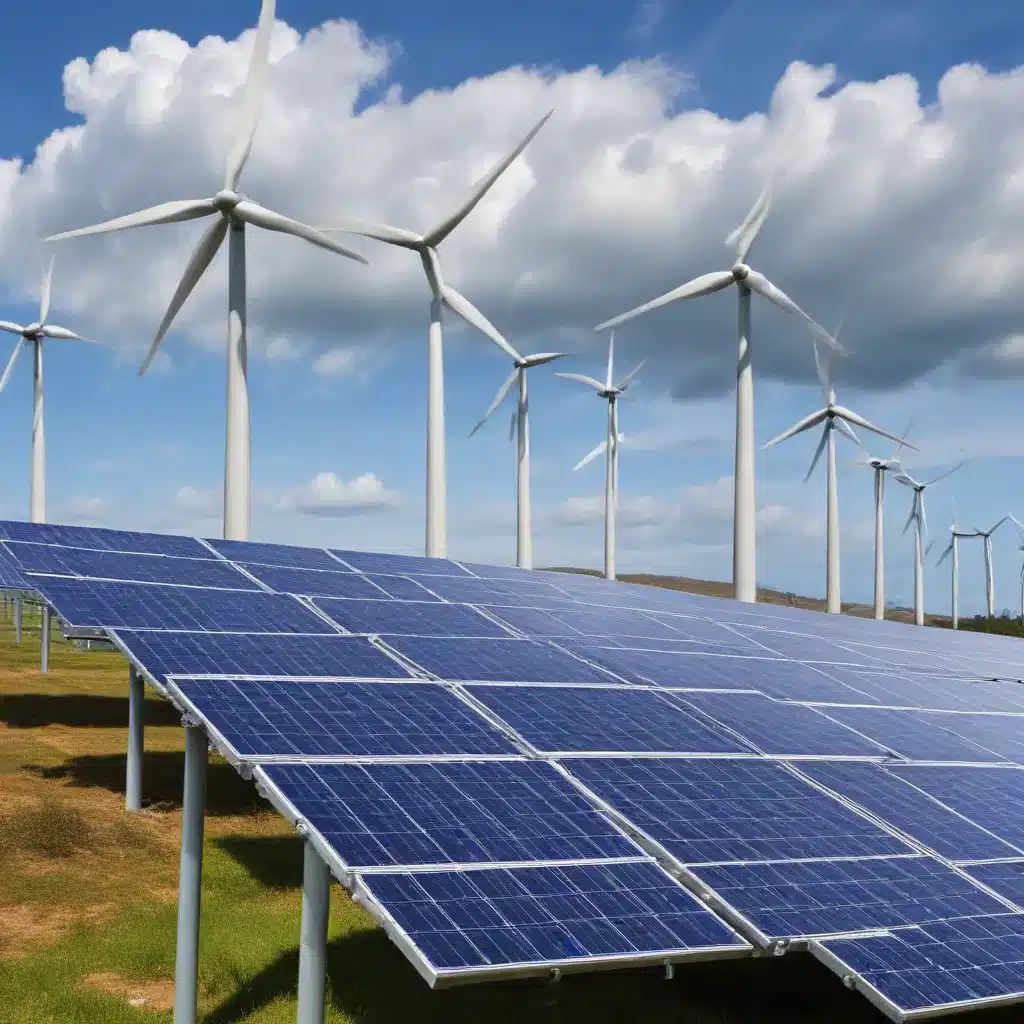
Renewable Energy and Smart Grids: Enhancing Energy Efficiency
As Europe embarks on its ambitious clean energy transition, the integration of renewable sources and the modernization of power grids have emerged as two critical pillars in the quest for a sustainable energy future. The European Future Energy Forum provides a crucial platform to explore the latest advancements and strategies that are driving this transformative shift.
Sustainable Energy Sources
The European Union has set its sights on achieving carbon neutrality by 2050, a goal that necessitates a significant expansion of renewable energy generation. Wind power has been a leading contributor, with countries like Germany, Spain, and the United Kingdom rapidly deploying offshore and onshore wind farms to harness the continent’s abundant wind resources. Solar photovoltaic (PV) technology has also witnessed remarkable breakthroughs, with solar PV capacity in Europe growing exponentially in recent years. Additionally, the rise of green hydrogen production, enabled by the coupling of renewable electricity and electrolysis, holds immense promise for decarbonizing hard-to-abate sectors such as heavy industry and long-distance transportation.
Energy Storage Technologies
Alongside the growth of renewable energy sources, energy storage technologies have emerged as crucial enablers of the clean energy transition. Battery storage systems, both at the grid and residential scale, are helping to mitigate the inherent variability of wind and solar, ensuring a more reliable and resilient power supply. Furthermore, the development of pumped-storage hydropower and hydrogen storage solutions are expanding the options for long-duration energy storage, which is essential for achieving a fully renewable-based electricity system.
Grid Integration Strategies
The integration of renewable energy sources into the power grid poses significant challenges, requiring innovative grid management strategies. Flexible power generation, demand-side response programs, and the optimization of grid infrastructure are all essential elements in ensuring the seamless incorporation of variable renewable energy. Additionally, the deployment of high-voltage direct current (HVDC) transmission corridors is enabling the efficient transport of renewable electricity over long distances, bridging supply and demand across the European continent.
Smart Grid Advancements
As the clean energy transition unfolds, the modernization of electricity grids has become a central focus. Smart grids, which leverage digital technologies, advanced sensors, and two-way communication, are revolutionizing the way power is generated, distributed, and consumed.
Intelligent Power Distribution
Smart grid technologies are enhancing the flexibility and resilience of power distribution networks. The deployment of advanced metering infrastructure, distributed energy resource management systems, and automated control devices is enabling grid operators to better match supply and demand in real-time, optimize asset utilization, and maintain grid stability even in the face of increasing renewable energy integration.
Demand-Side Management
Smart grids are also empowering consumers to play a more active role in energy management. The proliferation of smart meters and home energy management systems is providing consumers with granular visibility into their energy consumption, allowing them to make informed decisions and adjust their usage patterns to take advantage of dynamic pricing and demand-response programs.
Optimization Techniques
The integration of artificial intelligence and data analytics into smart grid operations is unlocking new levels of optimization. Grid digital twins, predictive maintenance algorithms, and advanced forecasting models are enabling grid operators to anticipate and respond to changes in the power system, optimize energy flows, and minimize the risk of disruptions.
Energy Efficiency Strategies
The quest for a sustainable energy future extends beyond the integration of renewable sources and the modernization of power grids. Enhancing energy efficiency across various sectors is a crucial component of the decarbonization effort.
Building Energy Management
The built environment, comprising residential, commercial, and industrial buildings, accounts for a significant portion of energy consumption and emissions. Innovative building energy management systems, which leverage sensor networks, Internet of Things (IoT) technologies, and predictive analytics, are enabling building owners and operators to optimize energy use, reduce wastage, and improve overall energy efficiency.
Industrial Energy Conservation
The industrial sector, with its energy-intensive processes, is also embracing energy efficiency strategies. The deployment of advanced manufacturing technologies, process optimization algorithms, and cogeneration systems is helping industrial facilities reduce their energy footprint and improve their environmental performance.
Transportation Electrification
The transportation sector, long dominated by fossil fuels, is undergoing a profound transformation with the rise of electric vehicles (EVs). The integration of smart charging infrastructure and vehicle-to-grid (V2G) technologies is enabling the seamless integration of EVs into the power grid, unlocking new opportunities for demand-side management and energy storage.
Enabling Technologies
The successful implementation of renewable energy solutions and smart grid advancements relies on a suite of enabling technologies that facilitate data-driven decision-making, robust communication, and advanced control capabilities.
Sensor Networks
The proliferation of sensors throughout the energy ecosystem, from grid infrastructure to building systems and transportation networks, is providing a wealth of real-time data that is essential for optimizing energy flows and enhancing system resilience.
Data Analytics
The massive volumes of data generated by smart grids and other energy systems are being leveraged through advanced data analytics and artificial intelligence to uncover insights, predict trends, and automate decision-making processes, ultimately driving greater energy efficiency and system optimization.
Communication Protocols
Reliable and secure communication protocols, such as 5G, Wi-Fi, and low-power wide-area networks, are facilitating the seamless exchange of information between various components of the energy system, enabling the effective coordination and control of distributed energy resources.
As Europe continues to chart its path towards a sustainable energy future, the integration of renewable energy sources, the modernization of power grids, and the embrace of energy efficiency strategies are all essential pieces of the puzzle. Through the collaborative efforts of policymakers, industry leaders, and innovative technology providers, the European Future Energy Forum is poised to play a pivotal role in shaping the continent’s energy landscape and ultimately, contributing to a cleaner, more resilient, and more efficient energy system.






